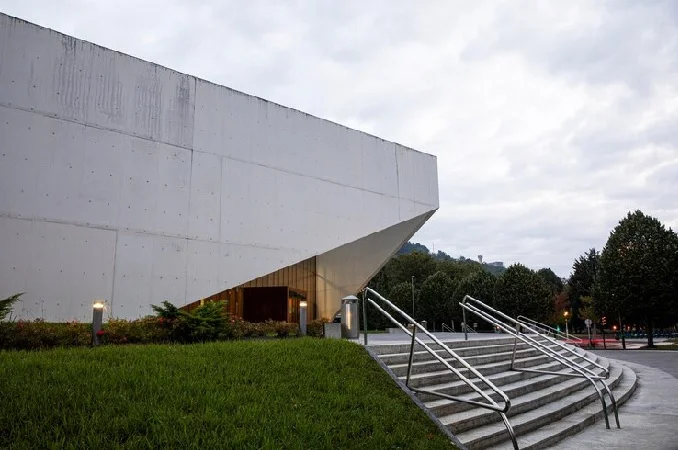
Overview
Have you ever seen a big, blocky building that looks like it’s made of concrete and wondered what style it is? That’s probably Brutalist architecture! This type of building design became popular in the 1950s and lasted until the 1970s. It’s known for its strong, bold look that some people love and others don’t like as much.
In this guide, we’ll learn all about Brutalist architecture. We’ll look at where it came from, what makes it special, and why it’s still important today. Whether you’re into buildings or just curious, this guide will help you understand this interesting style better.
History of Brutalist Architecture
Brutalist architecture started after World War II. Many cities needed new buildings quickly, and this style was a good fit. The name “Brutalism” comes from the French words “béton brut,” which mean “raw concrete.” This tells us a lot about how these buildings look!
Some important people who helped create this style were:
- Le Corbusier: A French architect who made the first Brutalist building
- Alison and Peter Smithson: British architects who wrote about Brutalism
- Paul Rudolph: An American architect known for his Brutalist college buildings
These architects wanted to make honest buildings that showed how they were made. They didn’t try to hide the materials or make things look fancy.
Characteristics of Brutalist Architecture
Brutalist buildings have some things that make them easy to spot:
Materials used:
- Concrete (usually left rough and unpainted)
- Brick
- Glass
- Steel
Design principles and aesthetics:
- Simple shapes
- Rough textures
- Visible support structures
- Not many decorations
Common features and elements:
- Big, chunky forms
- Lots of straight lines and angles
- Windows that look small compared to the walls
- Exposed pipes and ducts inside
Here’s a table to sum up the main points:
| Feature | Description |
|---|---|
| Materials | Mostly concrete, brick, glass, and steel |
| Shapes | Simple, geometric forms |
| Texture | Rough, often showing marks from construction |
| Details | Few decorations, focus on structure |
Notable Brutalist Buildings
There are many famous Brutalist buildings around the world. Here are some you might want to know about:
- Unité d’Habitation (Marseille, France)
- Made by Le Corbusier in 1952
- A big apartment building with shops and a roof garden
- Boston City Hall (USA)
- Built in 1968
- Known for its unusual shape and concrete exterior
- Habitat 67 (Montreal, Canada)
- Designed by Moshe Safdie in 1967
- Looks like stacked concrete boxes
- National Theatre (London, UK)
- Created by Denys Lasdun in 1976
- Has layers of concrete that stick out like shelves
- Robarts Library (Toronto, Canada)
- Built in 1973
- Looks a bit like a giant turkey from some angles!
These buildings show how Brutalist architects used concrete in creative ways to make striking designs.
Criticism and Controversy
Not everyone likes Brutalist buildings. Here’s what some people say:
- They look too harsh or unfriendly
- The concrete can get dirty and stained over time
- They don’t always fit in with older buildings nearby
- Some think they’re ugly or depressing
But others defend Brutalism:
- They say it’s honest about how it’s made
- The buildings are often very strong and last a long time
- Some people find beauty in the simple shapes and textures
One famous example of a controversial Brutalist building was Robin Hood Gardens in London. It was a housing project designed by Alison and Peter Smithson. Some experts thought it was important, but many people who lived there didn’t like it. It was torn down in 2017, which made a lot of architects sad.
Brutalist Architecture Today
Even though Brutalism isn’t as popular as it used to be, it’s still around:
- Some old Brutalist buildings are being fixed up and used in new ways
- A few architects are making new buildings inspired by Brutalism
- Young people are getting interested in Brutalist design for things like furniture
Some examples of newer Brutalist-style buildings are:
- The Tate Modern Switch House in London (2016)
- The National Museum of Qatar (2019)
These new buildings often mix Brutalist ideas with modern materials and eco-friendly features.
Conclusion
Brutalist architecture is a bold style that left a big mark on cities around the world. It tried to be honest and straightforward, using simple materials like concrete in new ways. While not everyone likes how Brutalist buildings look, they’re an important part of architectural history.
Understanding Brutalism helps us see why cities look the way they do today. It also shows how architects try to solve problems and express ideas through buildings. Whether you end up loving or hating Brutalist architecture, now you know more about why it exists and what makes it special.
